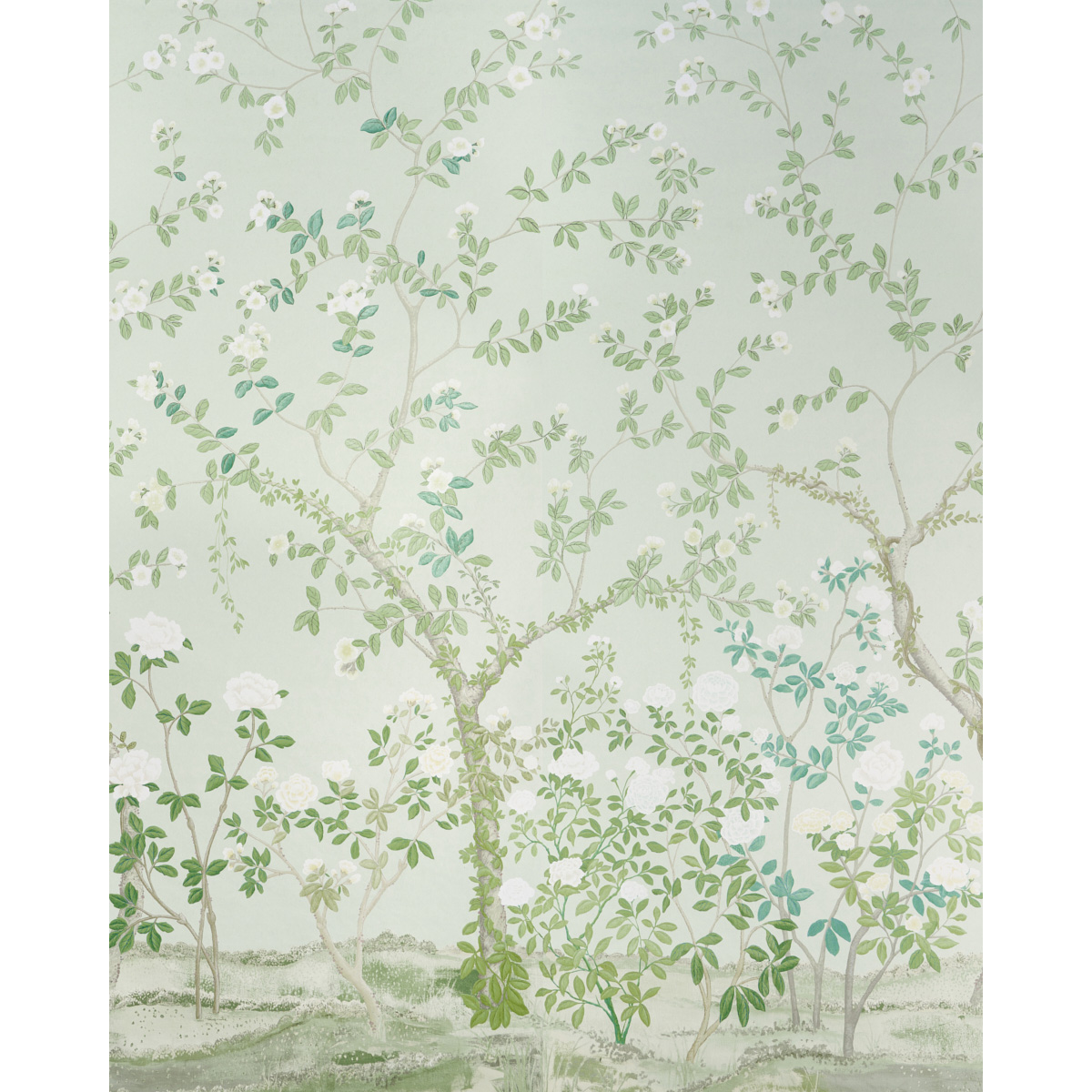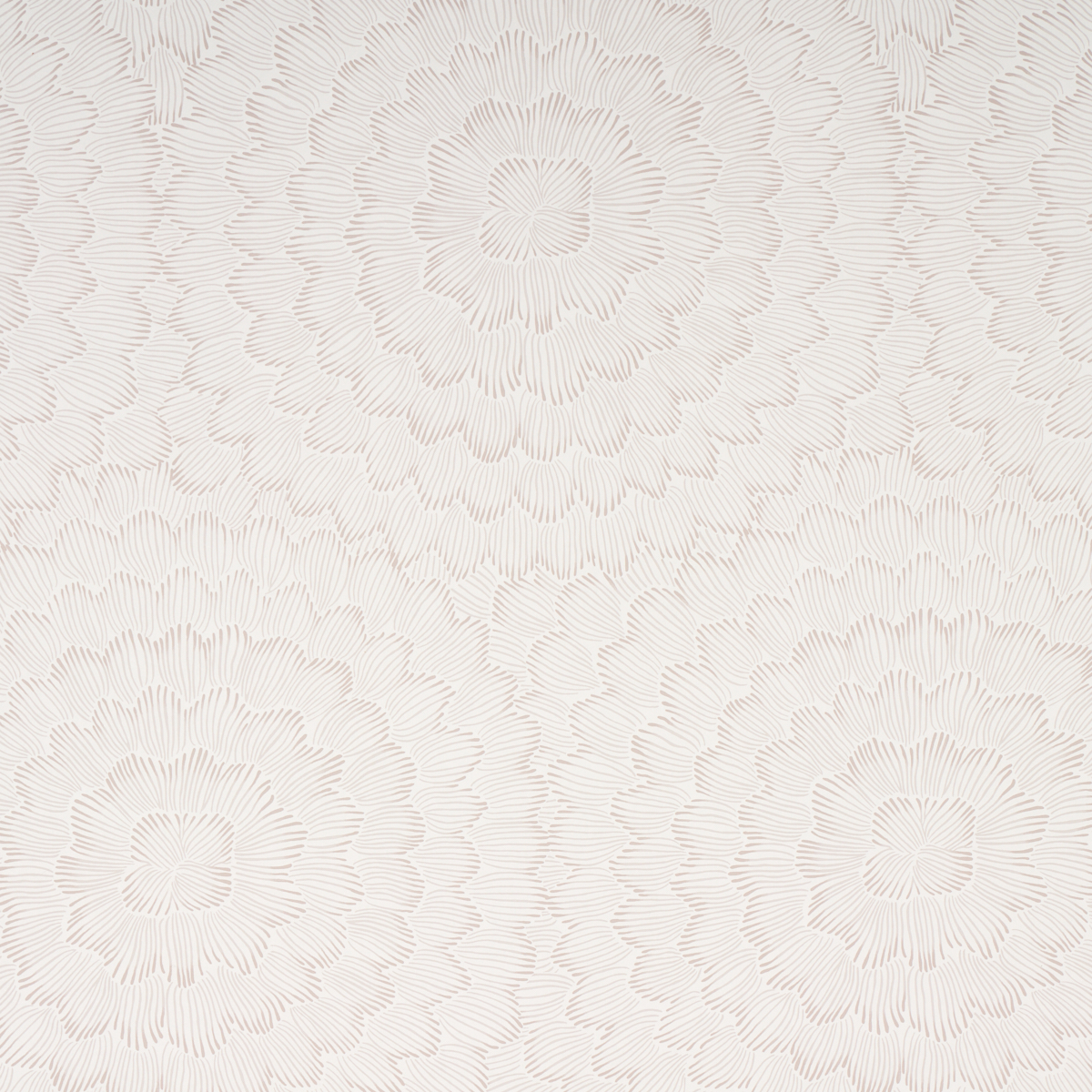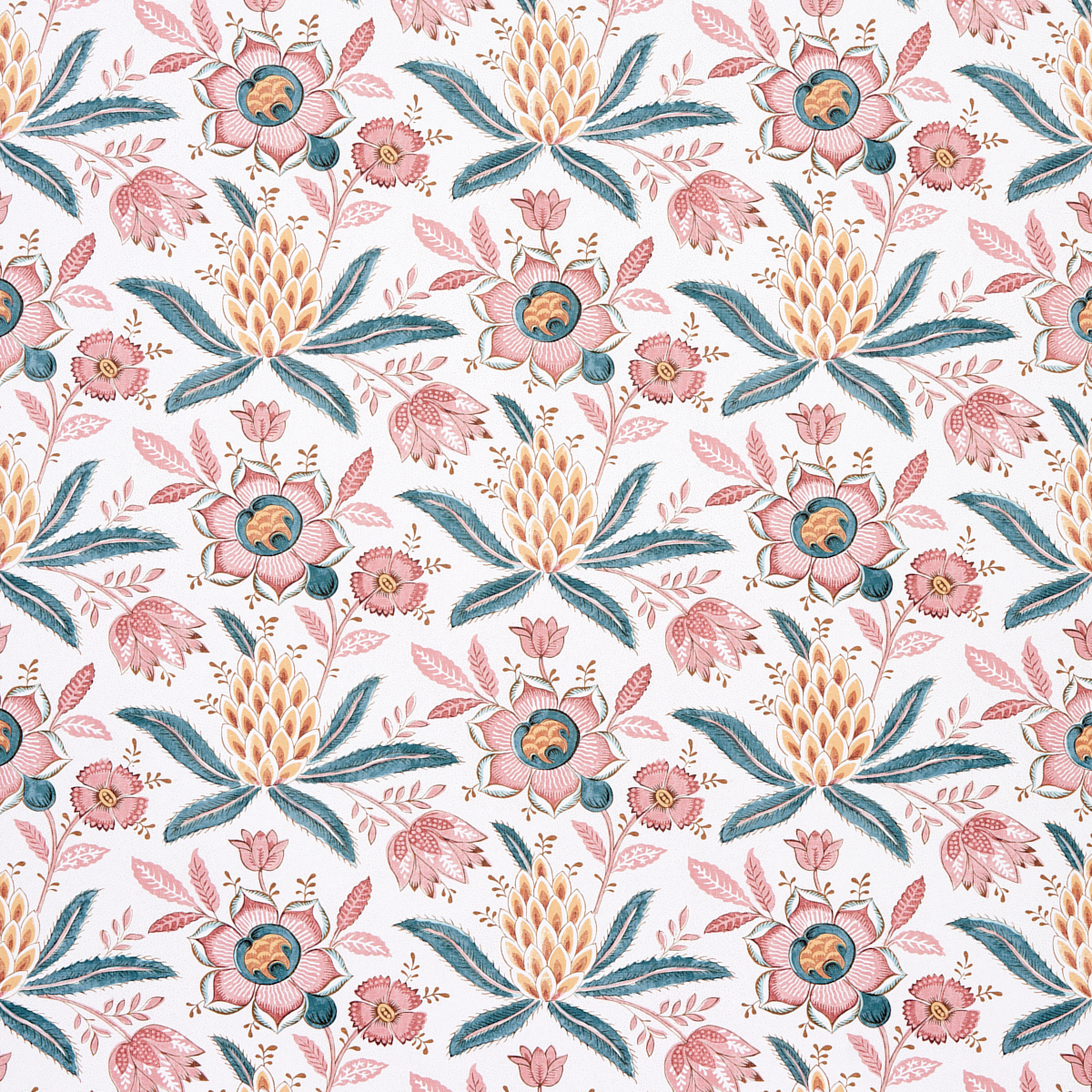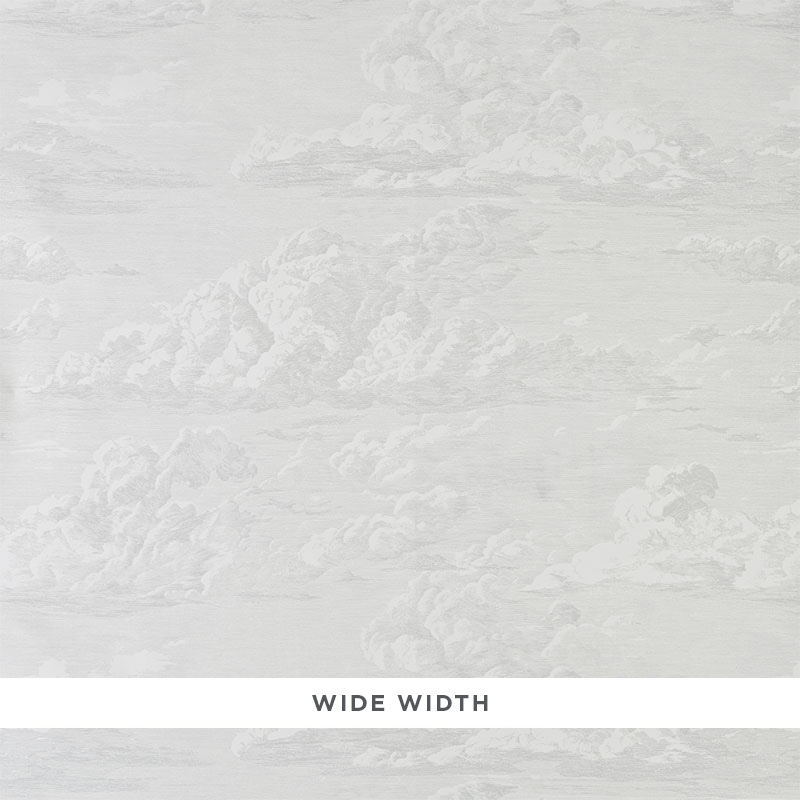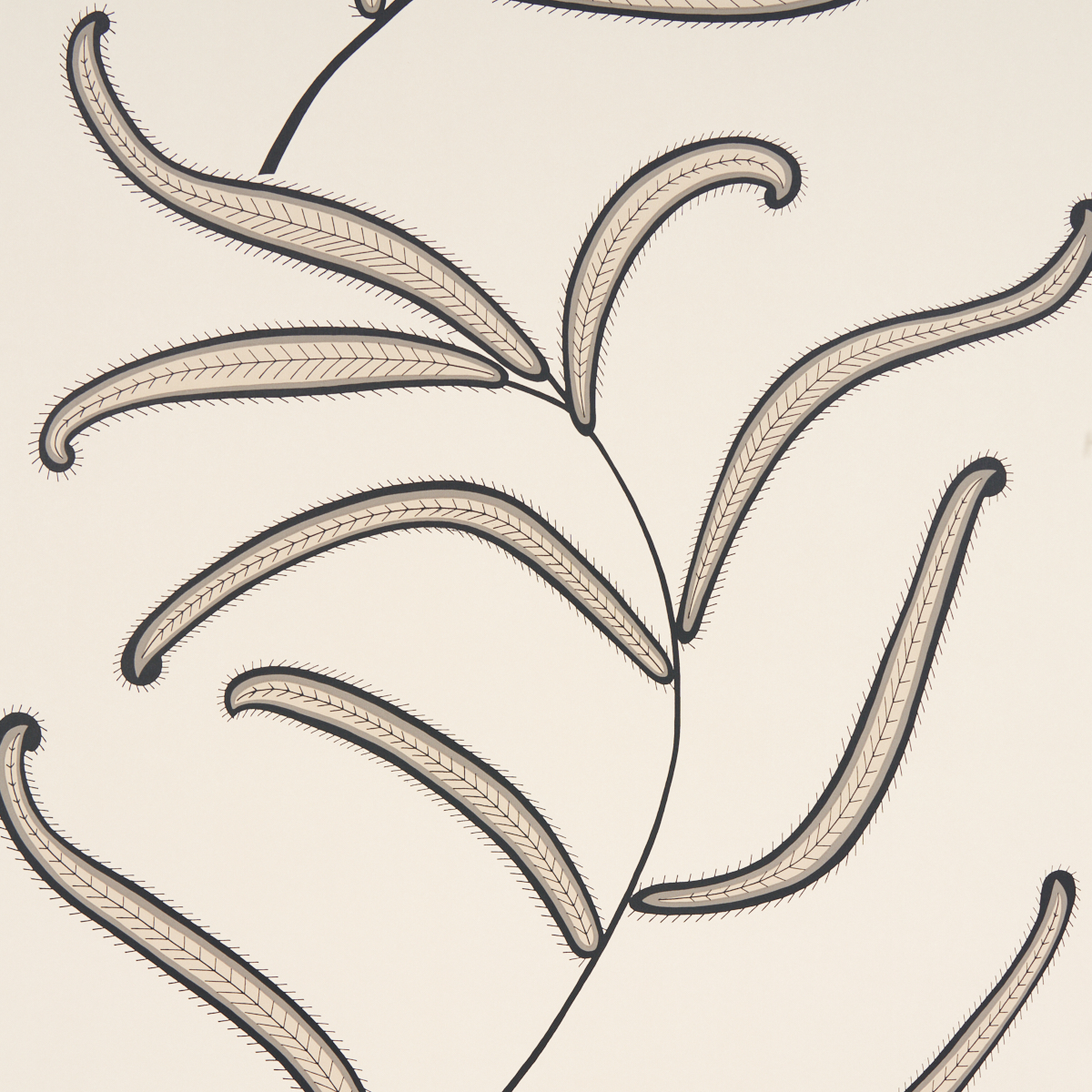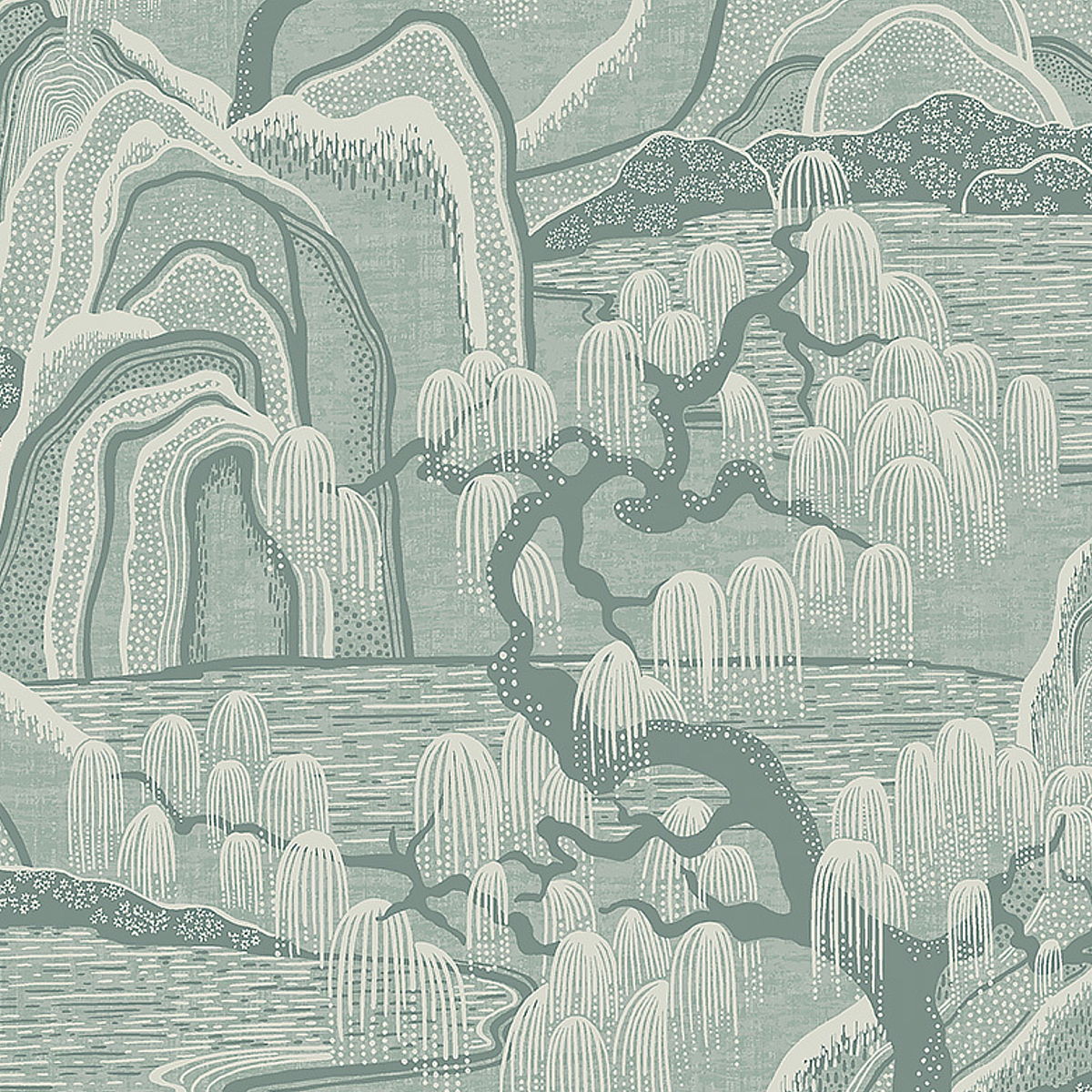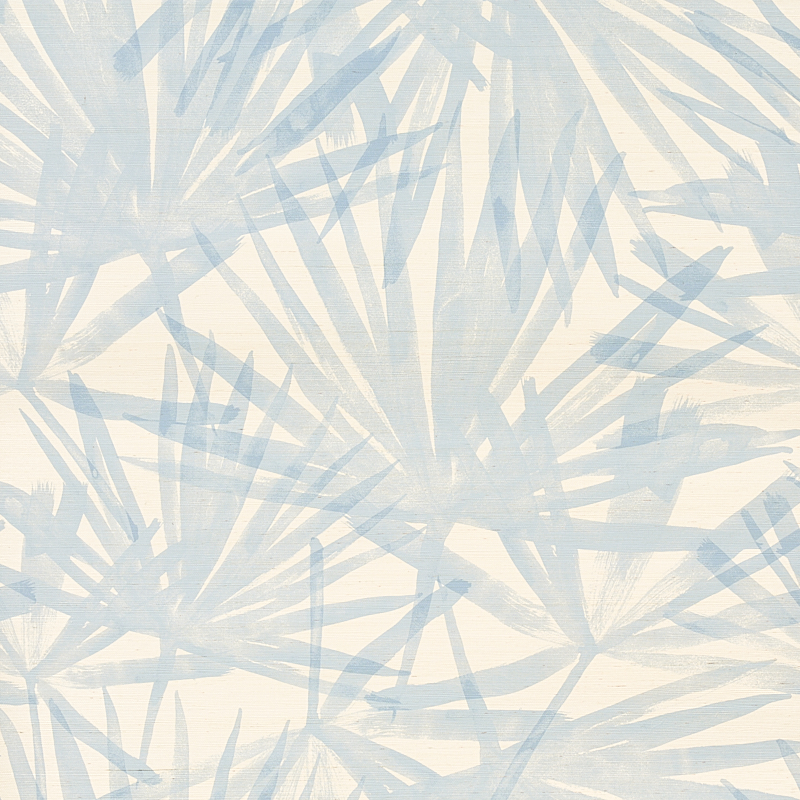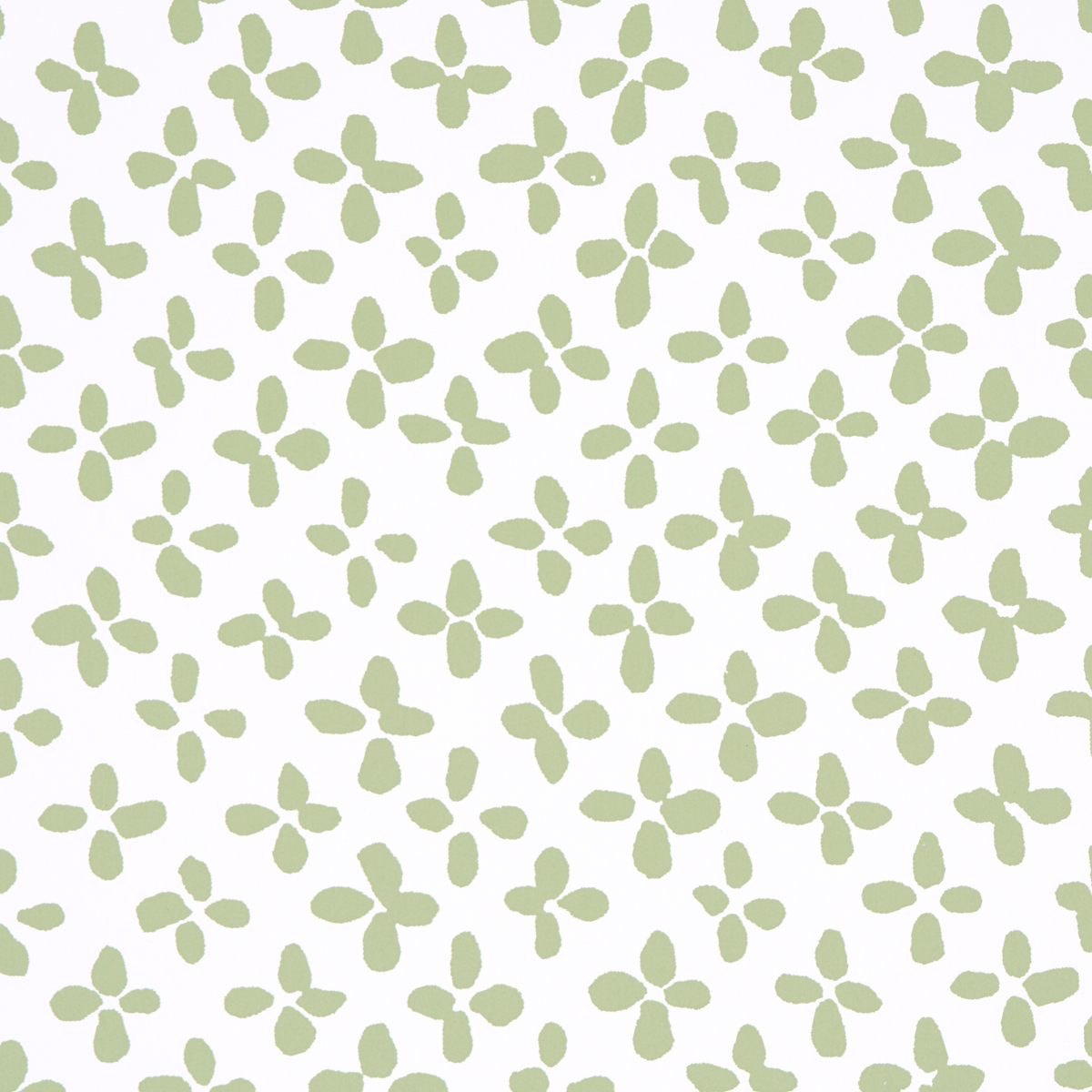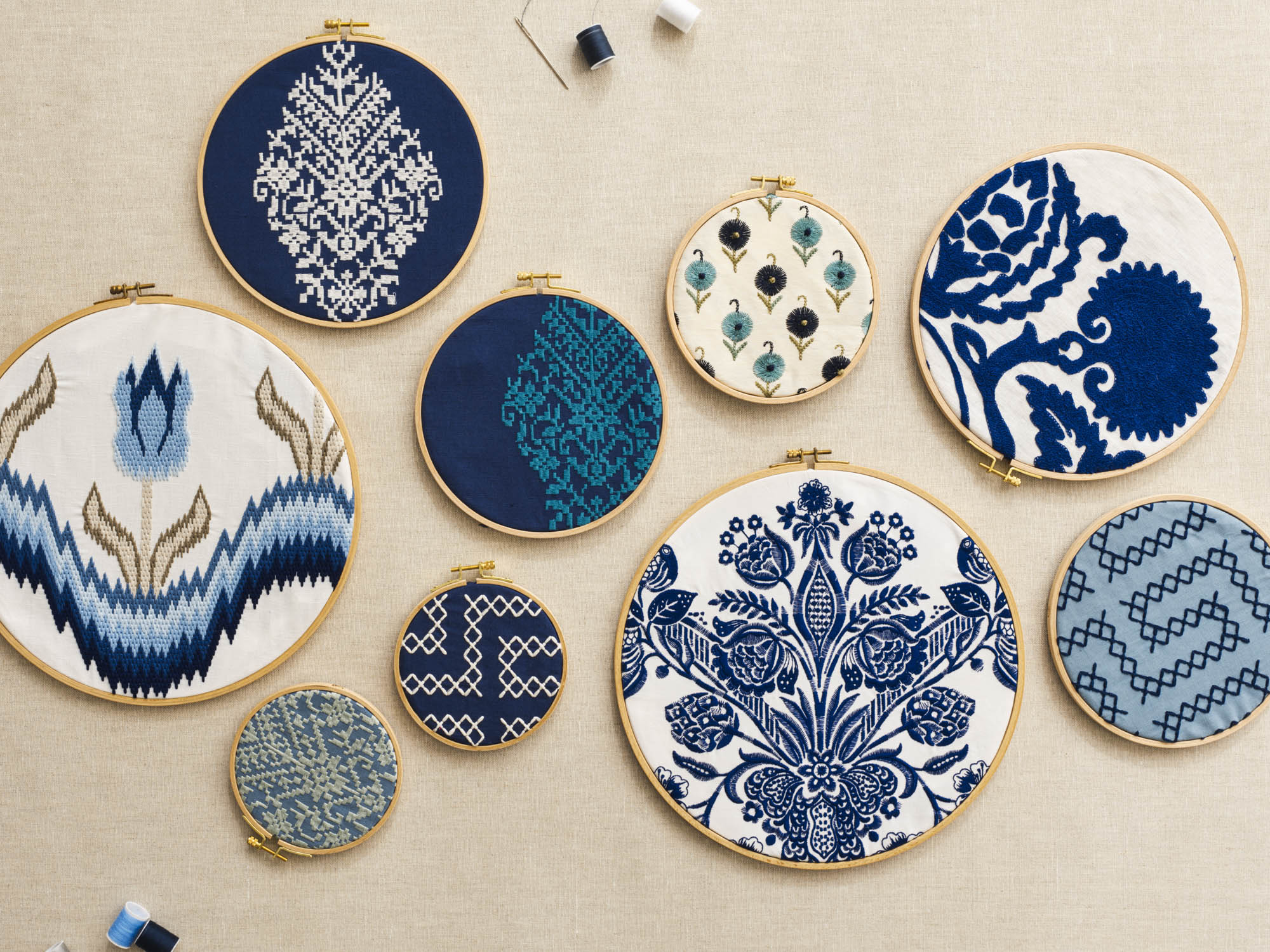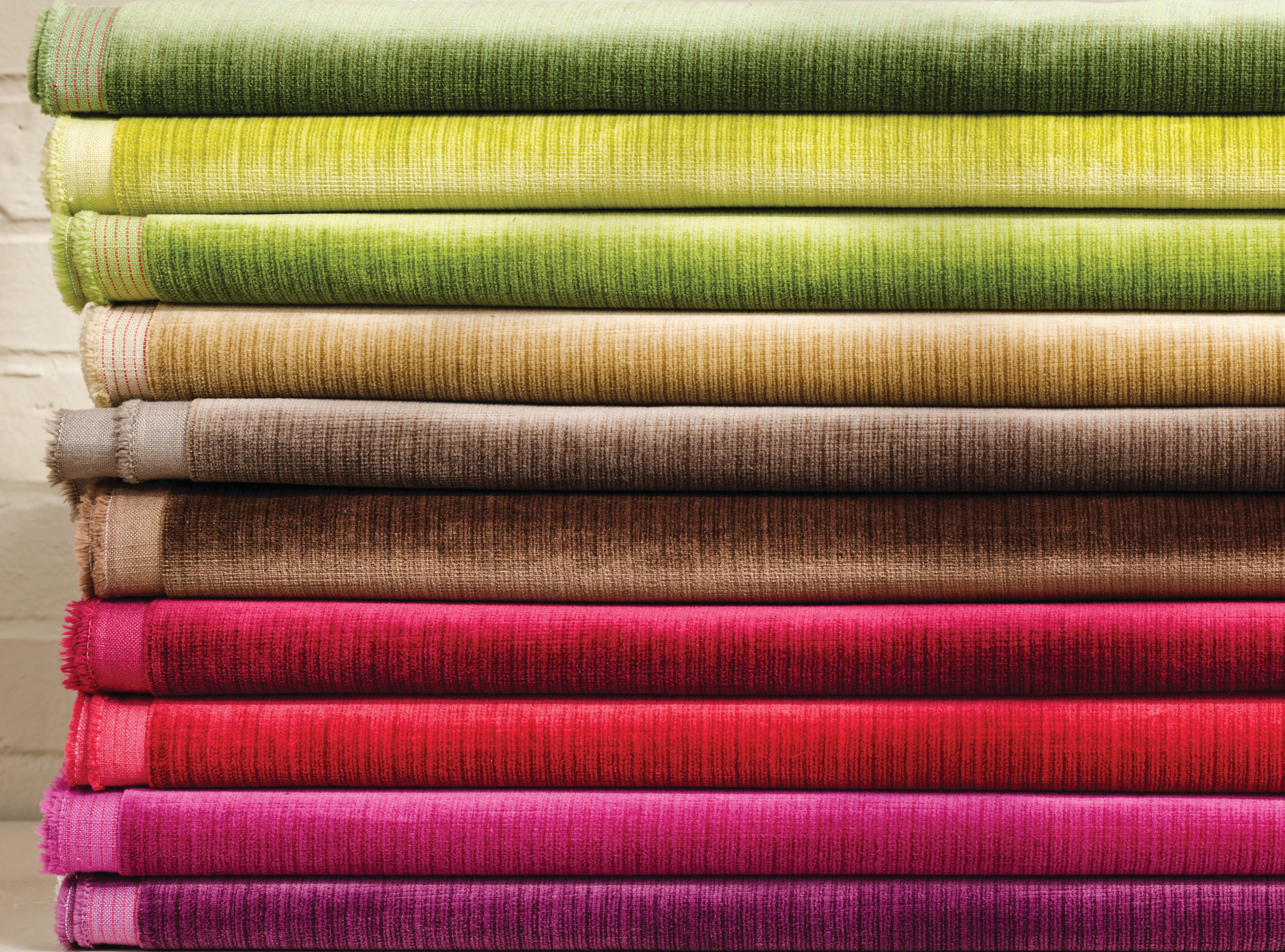Wallpaper is a design powerhouse. You can use it to liven up a room, completely transform it, or simply add a subtle element of intrigue. But hanging it correctly is key: Whether you use a bold large-scale pattern or a soft and airy print, a wallcovering is only as good as its installation. We sat down with textile expert Pamela Marshall, Creative Director of Patterson Flynn and former Schumacher VP of Design, for a lesson in wallpaper installation and selection.
Don’t Be Afraid of Bold Statements

Colordrunk Designs envisioned a whimsical and cheery pool mudroom with Valletta wallpaper by Happy Menocal in the 2022 Southeastern Showhouse.
Mali AzimaTo paint, or to install wallpaper, that is the design question. When it comes down to it, Pamela says that choosing between the two is more about style than function. “In general, if you want to make a patterned statement, a wallpaper or paper-backed fabric is the way to go,” she says.
“Wallpaper can add a pop of pattern, texture or dimension to a room that’s just not achievable with paint. Bold statement patterns are perfect for an entryway or powder room. Understated designs are just the thing for when you want a step up from a solid color but don’t want to overpower a space.”
Don’t Neglect Complex Patterns
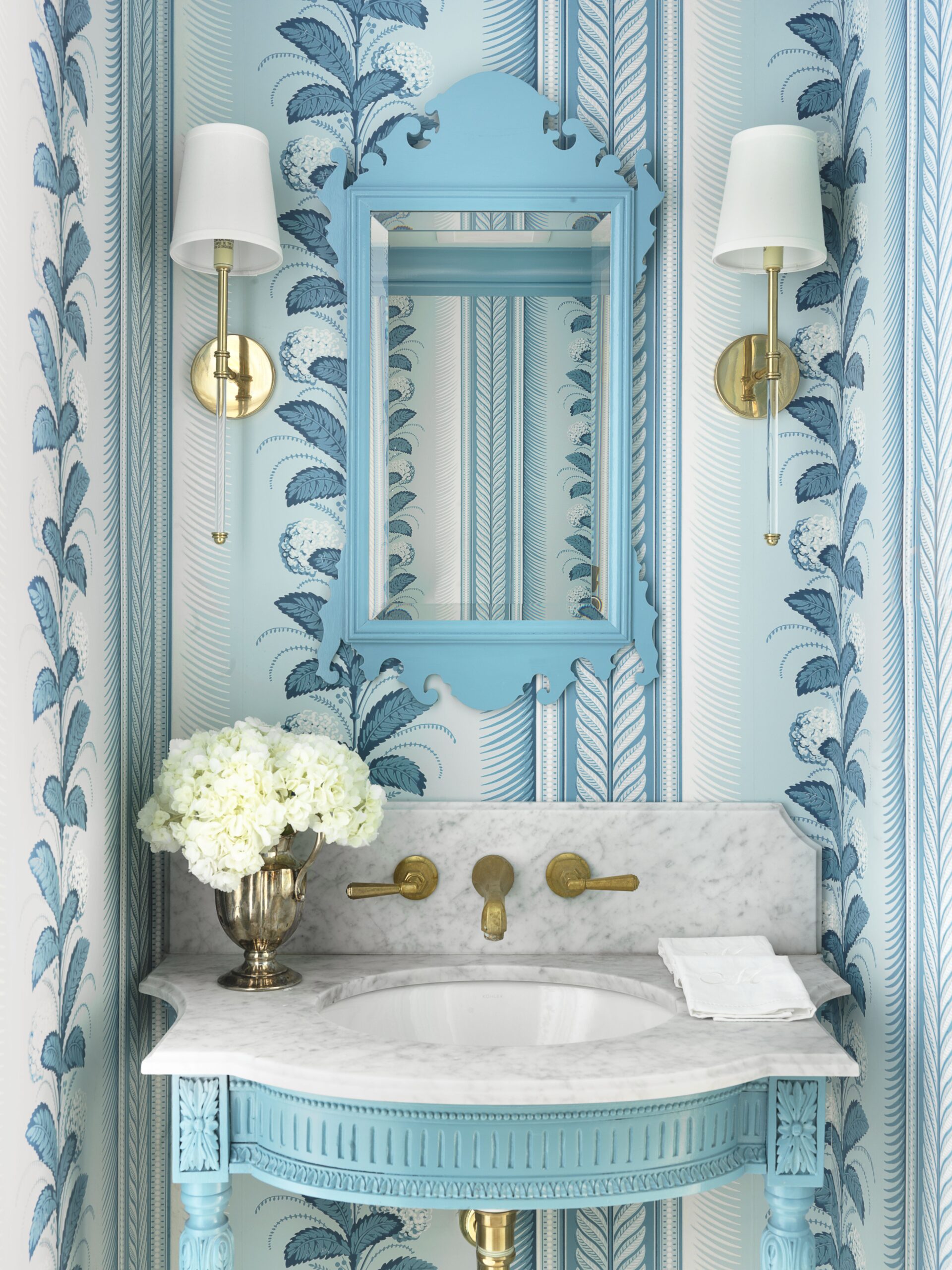
Blue and white is just right in this powder room by Amy Studebaker Design featuring our intricately detailed Hydrangea Drape wallpaper.
Alise O'Brien PhotographyComplex patterns might seem tricky, but it all comes down to knowing your space. It’s crucial that your walls are measured correctly, and that you order enough wallpaper to cover every last millimeter. “Wallpaper is printed in dye lots,” says Pamela. “If you realize that you don’t have enough, you may not be able to get more from the same lot, and consequently, it may be slightly off in color from the rest of the original order. A good rule of thumb to follow is that the larger the pattern, the more additional paper you need to ensure repeat matching. An experienced installer will know what to do!”
Don't Pick Just Any Installer
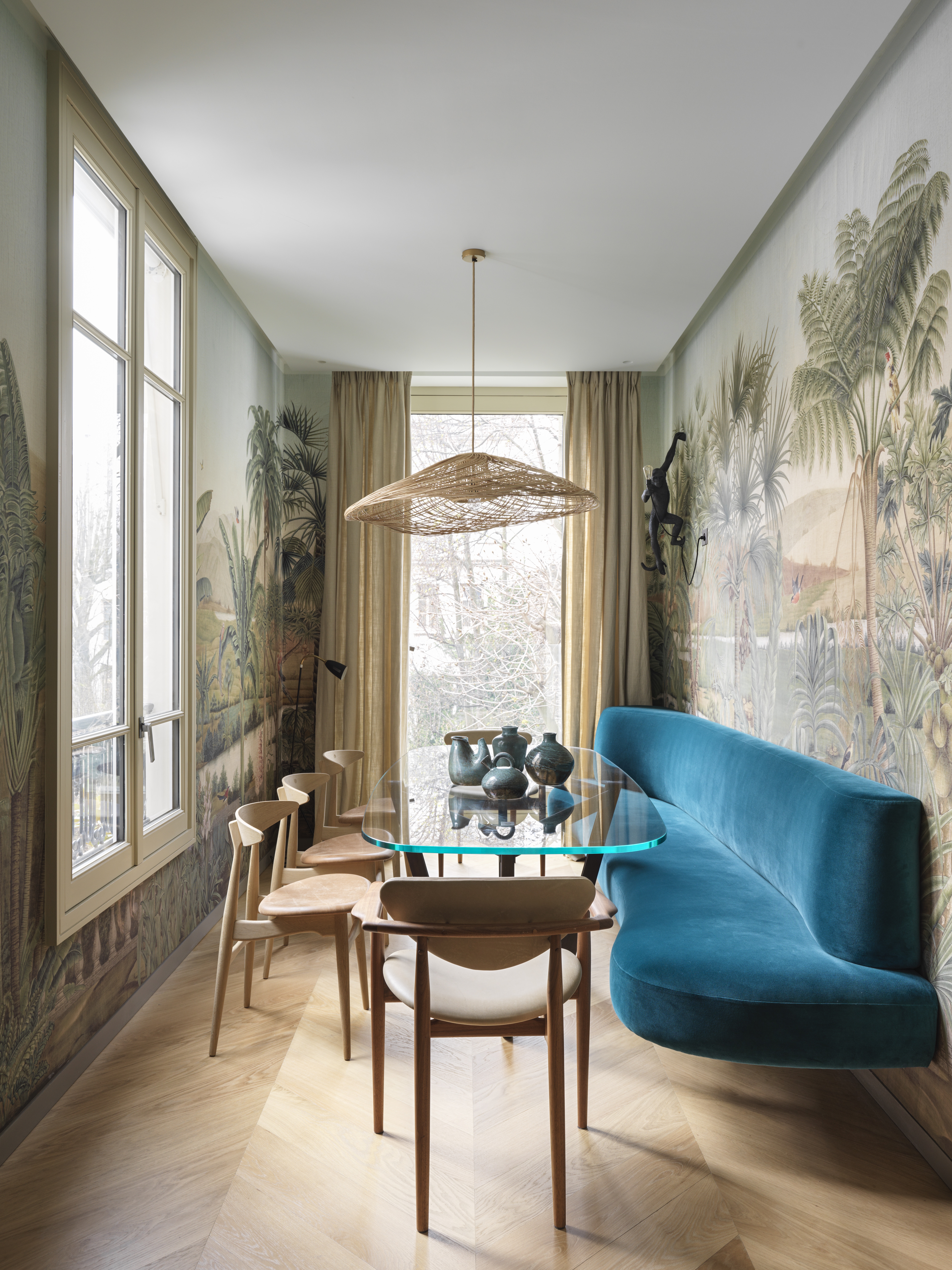
French design studio Le Berre Vevaud used multi-color mural D-Dream by Iksel Decorative Arts—available exclusively in the U.S. through Schumacher—to turn a narrow dining room into a great escape.
Stephan JulliardFinding a skilled and experienced wallpaper installer is vital for the success and quality of your installation. When vetting installers, Pamela advises asking as many questions as possible—and getting referrals. “How long has your pro been installing wallpaper? Those with experience consider it a craft and will treat your project as such,” says Pamela. Ask what types of wallpapers (i.e., untrimmed, trimmed and textured) they’ve worked with—the answer may be telling. Many installers, for example, are not equipped to install wide-width papers. “I would be hesitant to hire someone who does not come with broad experience in all types of wallcoverings, as you want someone who knows how to problem-solve should any issues arise,” Pamela adds. At minimum, the experience of your installer should fit your project. “Your installer should be the expert, as you’re hiring them to do the job beautifully and accurately.”
Lastly, “ask to see their work,” Pamela recommends. Pictures speak a thousand words when it comes to design execution.
Do These Wallpaper Installation Tips
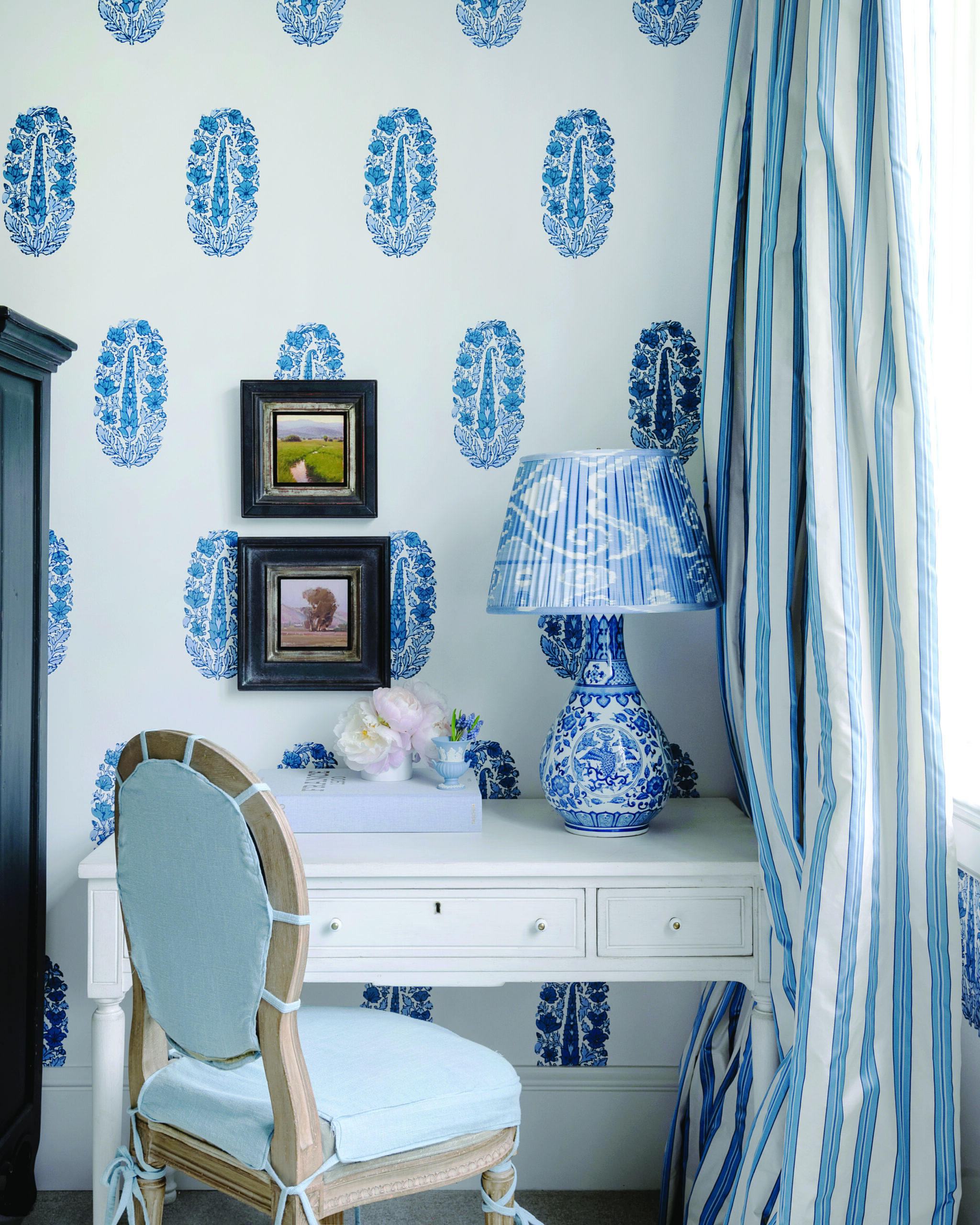
A sweet and chic blue-and-white bedroom designed by Hillary W Taylor Interiors featuring our hand-printed Askandra Flower wallpaper in Delft.
Heather NanA few tips for a successful and beautiful wallpaper installation:
- “Make sure your walls are prepped, meaning cleaned and primed. The surface should be smooth and without cracks or bumps. If you do have a wall with some minor blemishes, liner paper works great to smooth that over.”
- “Make sure the wallpaper is trimmed evenly. Inaccurate or skewed trimming can cause gaps in the design or mismatching design repeats as it’s hung across the wall, which hinders the overall effect.”
- “Don’t oversaturate the paper with paste during the installation. This is a general rule I’ve seen ruin many installations. Oversaturating the paper can cause damage and bubbling—that’s not the texture you want.”
- “Sharpen your blade! So many installation disasters can be avoided by this simple rule. A dull blade can tear, rather than smoothly trim, the edges of a wallpaper, and it can cause fraying edges on woven wallcoverings.”
Now for the fun part—choosing your wallcoverings! Browse our complete selection of wallcoverings and be sure to use our filters to easily narrow your search. Designers, order a free copy of The Schumacher Library of Wallcoverings and keep a complete compendium of our portfolio handy.
Shop a few of our favorite wallpapers below.

